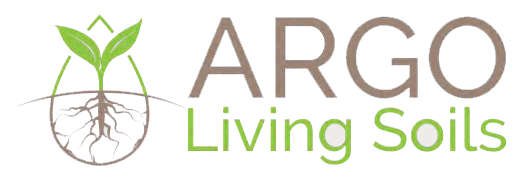Biochar, a charcoal-like substance derived from organic materials, holds immense potential for sustainable agriculture, environmental management, and industrial applications. In the Middle East, where arid climates and soil degradation pose significant challenges, biochar offers promising solutions across various sectors.
Use Case #1: Enhancing Soil Fertility (Saudi Arabia)
In the Middle East, where fertile, arable land is in short supply, heavy metal-contaminated soils pose a severe threat to the ecosystem, especially since there is limited area available for safe food production. Human activities like mining are the region’s primary source of heavy metal pollution, but nowhere is this more evident than in the Kingdom of Saudi Arabia. To rehabilitate and maintain the viability of land used for crops, it is crucial to limit the accessibility of heavy metals to plants in contaminated soils.
Soil Remediation:Biochar Provides A New Solution For Metal Contamination
In a 2014 study, biochar (produced from pyrolysis of Conocarpus-buttonwood) was added to metal-contaminated soil from the mining area of Mahad Ad’ Dahab, Saudi Arabia, to measure its effects on moisture content, heavy metal concentrations, and soil quality for growing maize plants.
Results showed that biochar improves soil moisture content by 30% at a 75% moisture level and doubled the retained moisture at a 100% moisture level. Biochar reduced bulk density by 12%, improving soil quality. Since high bulk density can halt microbe activity and other biochemical processes needed for plant growth. The incorporation of biochar also significantly reduced the content of heavy metals, with the highest reduction of 51.3% and 60.5% for manganese, 28.0% and 21.2% for zinc, 60.0% and 29.5% for copper, and 53.2% and 47.2% for cadmium at soil moisture levels of 75% and 100% FC, respectively.
Key Points
- Biochar improved the soil moisture content of maize plants grown in metal-contaminated soil by 30% at a 75% moisture level and doubled the retained moisture at a 100% moisture level.
- Biochar reduced soil bulk density by 12%, improving soil quality and plant yield.
- Most importantly, biochar significantly reduced the plant uptake of heavy metals, with the highest reduction of 51.3% and 60.5% for manganese, 28.0% and 21.2% for zinc, 60.0% and 29.5% for copper, and 53.2% and 47.2% for cadmium at soil moisture levels of 75% and 100% FC, respectively.
Use Case #2: CO2 Capture and Sequestration (UAE)
Biochar offers an innovative solution to both waste management and carbon capture, specifically in the United Arab Emirates and in the greater region. Date palm leaf bio-waste, a different form from the traditional feedstocks usually made into biochar, was studied for its carbon sequestration and C02 capture capacity.
Date Palm Biochar: A Regional Alternative Performs Well Under Pressure
In a study of date palm biochar as a climate change solution, the pyrolysis (heating the biowaste in the absence of oxygen) of the date palm leaf was performed at different temperatures ranging from 300°- 600 °C, with the DPL biochar produced retaining between 7% to 25% of its weight in C02. The biochar’s C02 absorption capacity increased with the temperatures used for the pyrolysis process.
Studies by Sizirici et al. (2021) concurrently revealed that the carbon content of the date leaf biochar was amplified with an increase in the pyrolysis temperature: The carbon content of feedstock was 31 percent, which increased to 47–57 percent in leaf biomass samples.
Date palm leaf biochar production is a sustainable agricultural practice that contributes to waste management and soil enhancement, as date palm leaf bio-waste is common in the Middle Eastern region, with very few helpful disposal alternatives. It can create economic opportunities for farmers and communities by adding value to agricultural residues and developing markets for biochar products.
Key Points
- Date Palm Leaf biochar retained between 7% and 25% of its weight in C02.
- The biochar’s C02 absorption capacity increased with the temperatures used for the pyrolysis process.
Use Case #3: Water Filtration and Desalination (Nigeria)
Studies have shown that biochar can effectively remove contaminants and impurities from water, making it suitable for irrigation and human consumption. It is particularly relevant in water-scarce areas throughout Africa and the Middle East.
Sustainable Treatment of Wastewater with Biochar and Bio-Sand Filtration
A joint experiment between the Federal College of Petroleum Resources in Effurun, Nigeria and Tennessee Technological University in the US, examining the efficiency of biofilters consisting of gravel, cassava-peel biochar and sand to filter oily wastewater, has produced some remarkable results.
The constructed biochar-based filters indicated that the oily wastewater, after being treated by the biofilter, had a percentage reduction of 56.89% – 83.44% in organic pollutants and reduced chemical contaminants by 32.67%.
The filtration system was also tested for heavy metal filtration, with the results underscoring the potential of cassava peel biochar to effectively mitigate specific heavy metal concentrations, like lead, nickel, copper, iron and zinc.
In the study, lead was reduced by up to 74% nickel and 54%, with copper and chromium being wholly removed from the treated water samples, revealing the cassava peel biochar’s exceptional efficiency in eliminating those two minerals. Iron was reduced by approximately 25%, while zinc was reduced by 50%.
Key Points
- Water treated by the biochar/bio-sand filter system had a percentage reduction of 56.89% – 83.44% in organic pollutants and reduced chemical contaminants by 32.67%
- The cassava-peel biochar-based filter reduced the lead by up to 74%, nickel by 54%, iron by approximately 25%, and zinc by 50%.
- During biofiltration, copper and chromium were removed entirely from the treated water samples, demonstrating 100% filtration efficiency for those two particular metals.
This biochar application can offer a sustainable solution for resource conservation and land restoration due to the effects of petroleum extraction and refining, which are significant industries throughout Africa and the Middle East.
Use Case #4: Biochar as a Renewable Energy Source )
With the current energy crisis and depletion of fossil fuels, finding sustainable and eco-friendly energy sources is crucial, and there are several biomass conversion pathways for producing bioenergy as a valuable byproduct of making biochar, with the ability to create electricity, biodiesel, and biohydrogen.
Not Just for Agriculture – Biochar Creates Its Own Clean Energy
Biochar from biomass can yield high biodiesel during conversion, ranging from 32.8% to 97.75%.
It can also serve as an anode, cathode, and catalyst in microbial fuel cells with a maximum power density of 4346 mW/m2. Biochar also plays a role in catalytic methane decomposition and dry methane reforming, with hydrogen conversion rates ranging from 13.4% to 95.7%. Biochar can also increase hydrogen yield by up to 220.3%.
In general, biofuels produced from biomass, including biochar pyrolysis, can displace up to 27% of the world’s transportation fuel by 2050, reducing greenhouse gas emissions by up to 3.7 billion metric tons per year.
Key Points
- Biochar can yield high biodiesel during conversion, ranging from 32.8% to 97.75%.
- It can also serve as an anode, cathode, and catalyst in microbial fuel cells with a maximum power density of 4346 mW/m2.
- Biochar also plays a role in catalytic methane decomposition and dry methane reforming, with hydrogen conversion rates ranging from 13.4% to 95.7% and increasing hydrogen yield by up to 220.3%.
- Biofuel production (including biochar energy sources) could reduce greenhouse gas emissions by up to 27%, or 3.7 billion metric tons per year.


